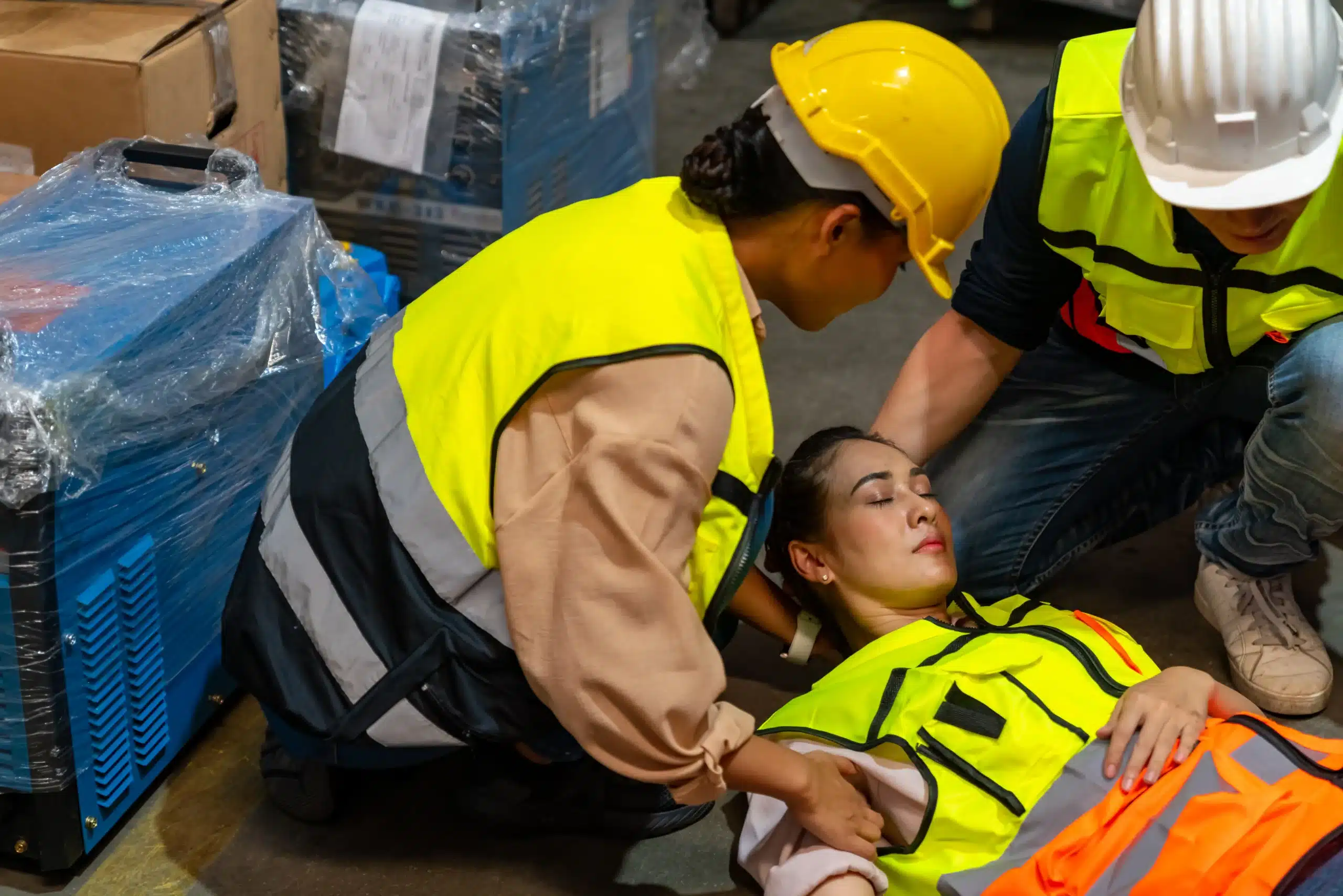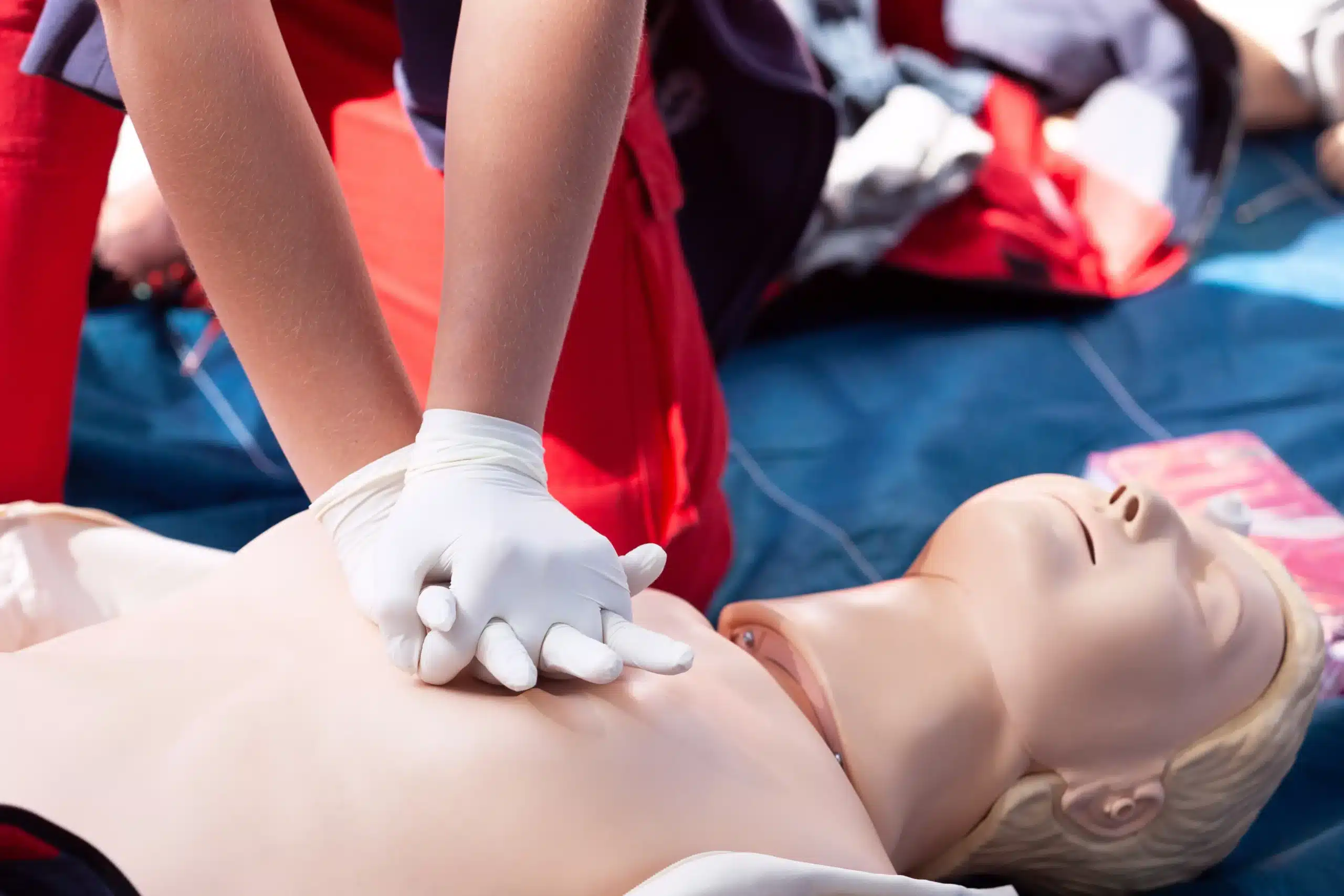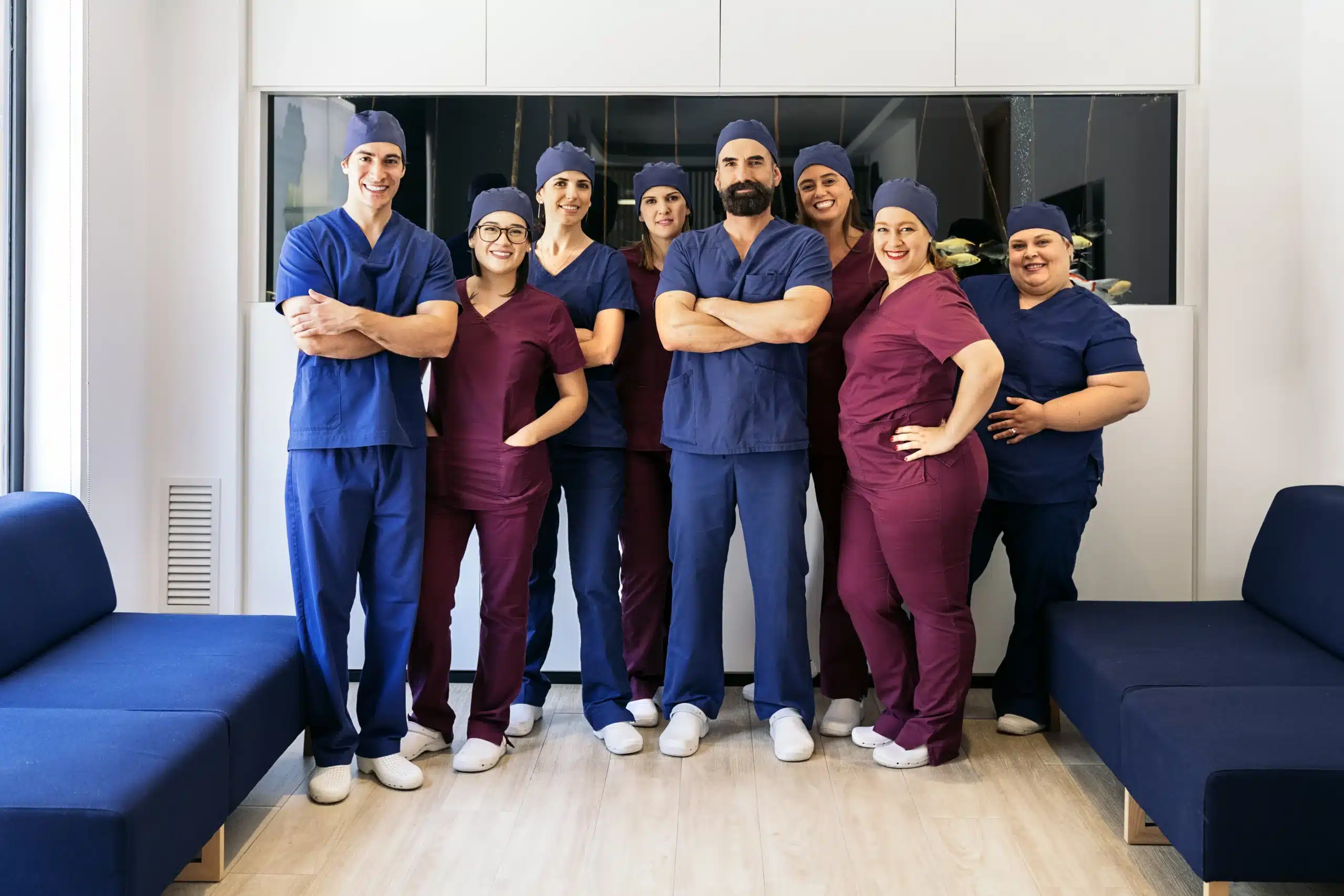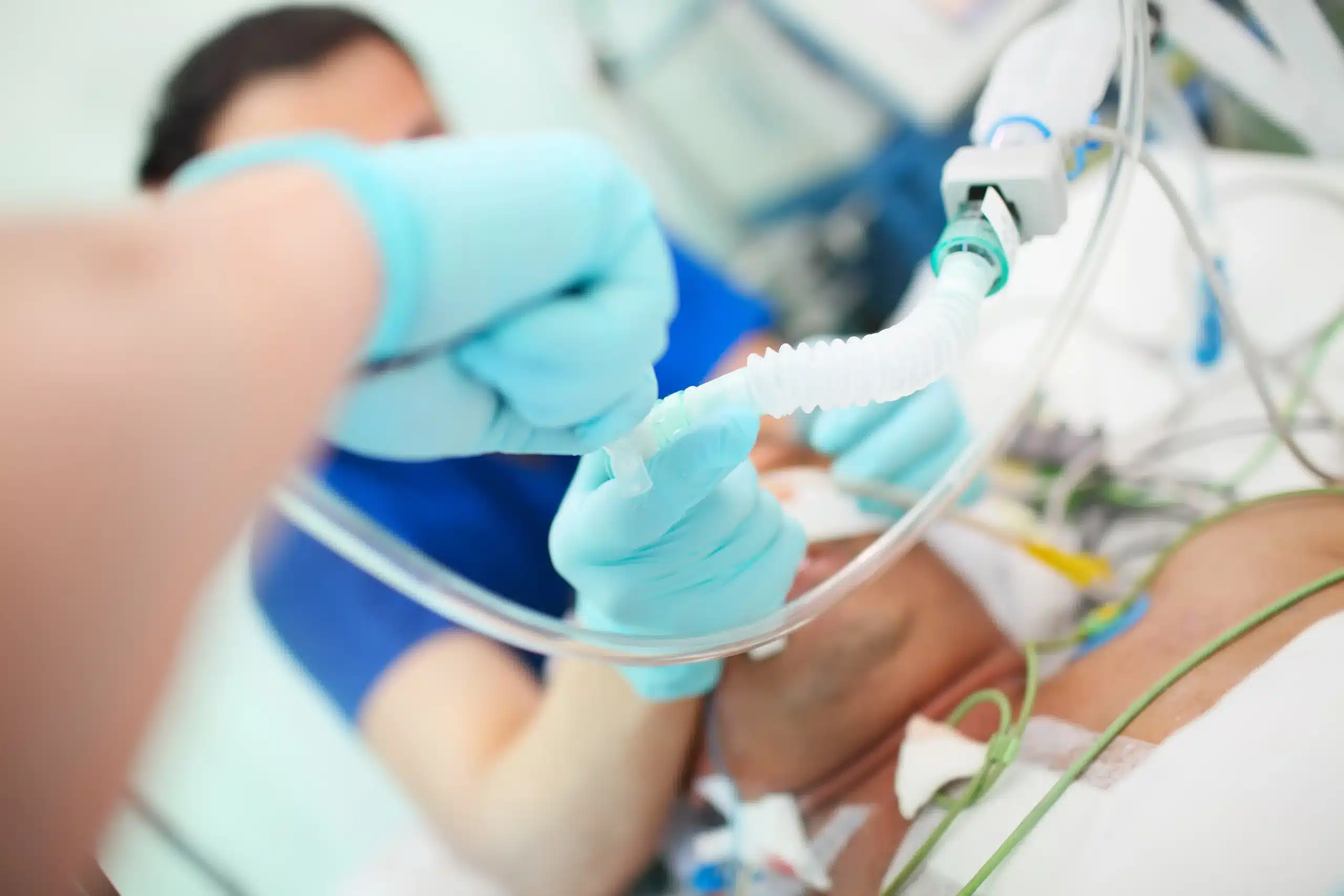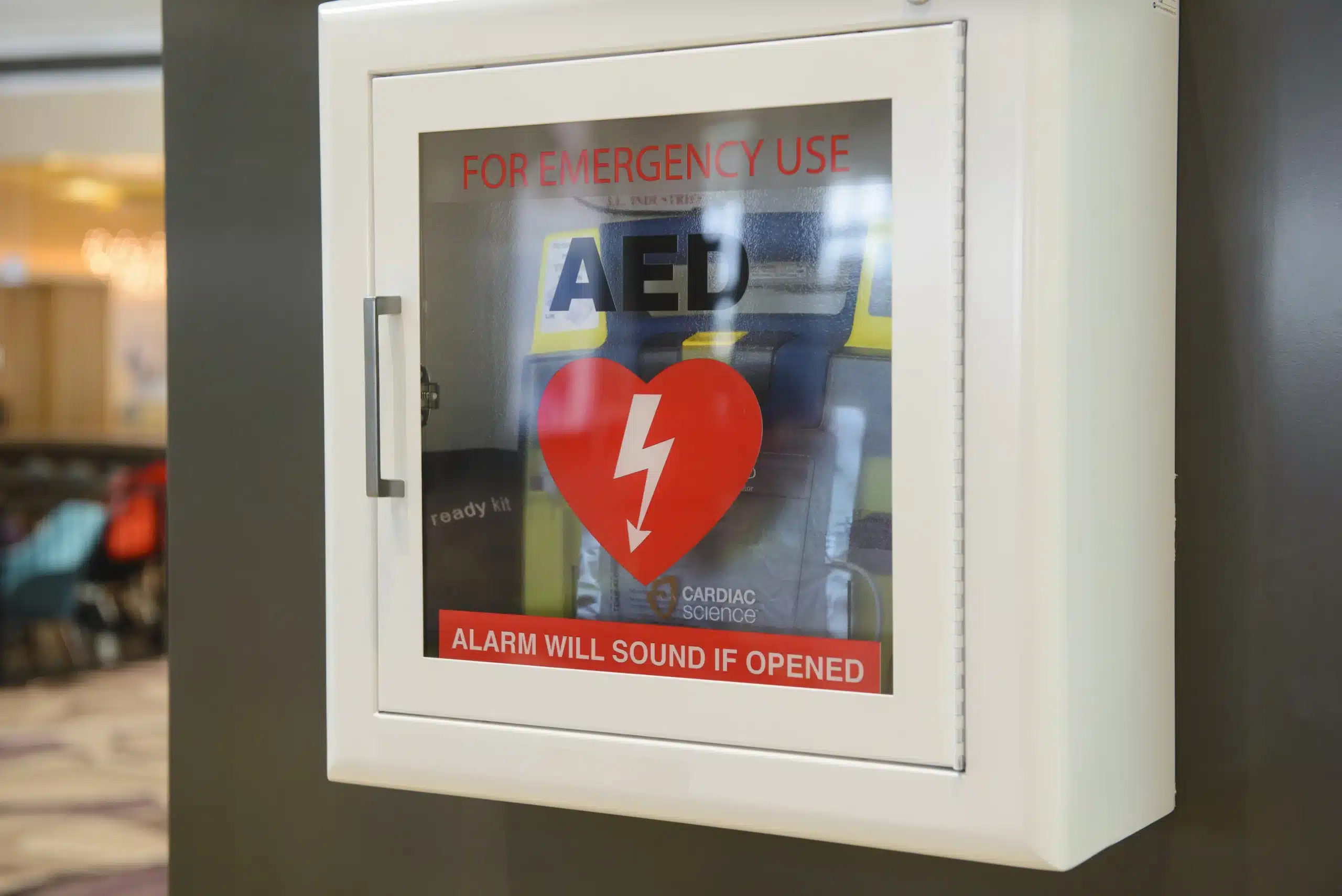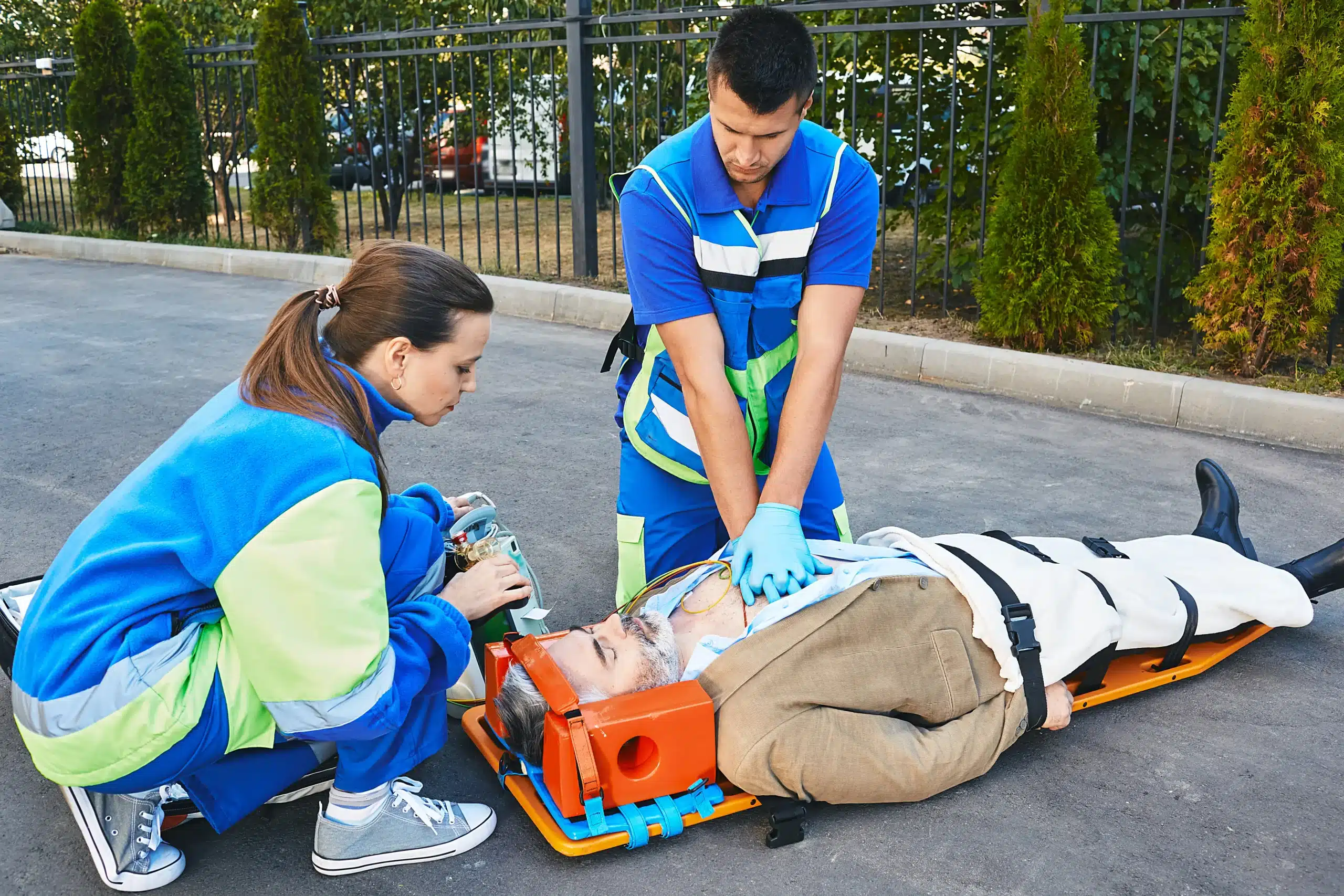In a world where the unexpected can happen at any moment, knowing first aid is more than just a good idea—it’s an essential life skill. This guide is your starting point for finding “first-aid classes near me” and gaining the confidence to respond effectively in emergencies. We’ll explore the various types of first-aid training available, from basic courses to specialized certifications like wilderness first aid and pediatric first aid. We’ll also discuss the importance of CPR and AED training, the benefits of certification, and how to choose the right class format for your learning style. Let’s empower you to make a difference in your community and beyond.
Key Takeaways
- First-aid skills empower you in emergencies: Knowing how to respond to injuries and medical crises gives you confidence and the potential to save lives. Explore first-aid, CPR/AED, and specialized courses to find the right fit.
- The right course format enhances your learning: Think about your schedule and learning preferences when choosing between in-person, online, or blended learning formats. Hands-on practice is key for essential skills like CPR.
- Finding a course is easier than you think: Many organizations offer first-aid and CPR training. Research local providers, compare what they offer, and choose a course that meets your needs and budget.
What are First-Aid Classes?
First-aid classes teach you how to respond to medical emergencies, from minor injuries like cuts and scrapes to more serious situations like heart attacks. These courses give you the skills to provide immediate care until professional help arrives. They cover a range of topics, from basic wound care to CPR and using an AED. Whether you’re looking for basic knowledge or specialized training, there’s a first-aid class out there for you.
Basic First Aid
Basic first-aid courses cover essential skills everyone should know. You’ll learn how to treat common injuries like cuts, burns, sprains, and fractures. The curriculum also includes recognizing and responding to medical emergencies such as choking, allergic reactions, and fainting. These basic first-aid skills can be applied anywhere, from the workplace to your own home. Knowing how to handle these situations can make a real difference.
CPR and AED
CPR (Cardiopulmonary Resuscitation) and AED (Automated External Defibrillator) training are often included in first-aid classes or offered as standalone courses. CPR teaches you how to perform chest compressions and rescue breaths to keep someone’s blood circulating and oxygen flowing until paramedics arrive. AED training shows you how to use an automated external defibrillator, a device that can help restore a normal heart rhythm in case of sudden cardiac arrest. These skills are crucial for responding to life-threatening emergencies. Our CPR and First-Aid certification courses combine these essential life-saving techniques.
Specialized First Aid
Beyond basic first-aid and CPR/AED training, you can find specialized courses tailored to specific needs. Specialized first-aid training might focus on wilderness first aid for outdoor enthusiasts, pediatric first aid for childcare providers, or mental health first aid for those working in education or social services. These courses address the unique challenges of each environment and provide targeted training. For healthcare professionals, we offer advanced courses like ACLS (Advanced Cardiovascular Life Support), PALS (Pediatric Advanced Life Support), and BLS (Basic Life Support). We also provide RQI programs for convenient recertification.
Find First-Aid Classes Near You
Ready to find a first-aid class? Here’s how to get started:
Search Online
The internet is your best friend when searching for local classes. A quick search for “first-aid classes near me” will turn up plenty of options. Sites like the American Red Cross offer a convenient way to locate classes by zip code and filter by course type. You’ll find options for online learning, in-person classes, or a blend of both. Many other training providers also have online search tools, so explore a few to see what works best for you. If you’re looking for CPR and first-aid certification in San Mateo, Daly City, or Millbrae, check out our CPR and first-aid certification courses.
Check Local Organizations
Hospitals, community centers, and fire departments often host first-aid and CPR training. Check their websites or give them a call to see what’s available. Organizations like Healthline First Aid in Milwaukee and CPR Certification Dallas offer certification courses through the American Heart Association. Your local YMCA or recreation center is another great place to check. Don’t forget to explore options at community colleges and continuing education programs as well.
Ask Your Workplace or School
Your employer or school might offer first-aid training, sometimes even for free. It’s worth checking with your HR department or student services to see what’s available. Some employers will cover the cost of certification, especially if it’s relevant to your job or field of study. This can be a convenient and cost-effective way to get certified. Even if your workplace doesn’t offer a full course, they may have resources or information about discounted training options in the area.
What to Expect in Class
So, you’ve decided to learn first aid—fantastic! Knowing what to expect can make your learning experience smoother and more enjoyable. Here’s a glimpse into a typical first-aid class:
Course Content
First-aid courses cover essential life-saving procedures. You’ll learn CPR for adults, children, and infants, a skill that can make all the difference in emergencies. AED training is also included, teaching you how to use these devices. Beyond CPR and AEDs, you’ll explore various first-aid techniques for common injuries like cuts, burns, sprains, and fractures. The American Heart Association offers details on these essential skills. Some courses also cover recognizing and responding to allergic reactions, strokes, and other medical emergencies. Our courses at Safety Training Seminars follow American Heart Association guidelines, ensuring you receive high-quality, comprehensive training.
Hands-on Practice
First-aid isn’t just about theory—it’s about taking action. Expect plenty of hands-on practice. You’ll work with mannequins to practice CPR and learn to apply bandages and splints. This practical experience builds confidence and ensures you can apply your knowledge in real-life situations. Many organizations, like the Red Cross, emphasize hands-on training to meet workplace and professional requirements. This creates a dynamic learning environment where you can ask questions, refine your technique, and become comfortable with the procedures. At Safety Training Seminars, we prioritize hands-on learning, providing ample opportunity to practice your skills in our San Mateo courses.
Assessment
Most first-aid courses include an assessment to evaluate your understanding. This typically involves a written test and a practical demonstration of the techniques you’ve learned. Successfully completing the assessment earns you a certification, often valid for two years. These certifications are widely accepted by employers and organizations. CPR Certification Dallas offers more information on certification acceptance. Remember, staying current with your training is essential, so recertify when needed. Our RQI program offers a flexible way to maintain your skills and certification.
Choose the Right Class Format
Deciding on the right class format depends on your learning style, schedule, and certification requirements. Let’s explore the pros and cons of each option so you can make the best choice.
In-Person Training
In-person classes provide a structured environment with face-to-face interaction with an instructor and fellow students. This format excels at hands-on practice, crucial for developing the muscle memory and confidence needed for real-life first-aid scenarios. You’ll get real-time feedback and have the opportunity to ask questions as they arise. In-person training typically satisfies most workplace requirements. Check with your employer or licensing body to confirm their specific guidelines. Safety Training Seminars offers a variety of in-person training courses in San Mateo and surrounding areas, including BLS, ACLS, and CPR/First-Aid.
Online Courses
Online courses offer unparalleled flexibility, allowing you to learn at your own pace and on your own schedule. This format is often more affordable than in-person classes. However, online courses may not meet all workplace requirements, so it’s essential to verify acceptance with your employer before enrolling. While some online courses offer virtual simulations, they may not fully replicate the hands-on experience of in-person training. The American Red Cross offers a variety of online courses. If flexibility is key, explore online options for CPR and First-Aid training.
Blended Learning
Blended learning combines online convenience with the practical application of in-person training. You’ll typically complete the theoretical portion online, followed by an in-person skills session to practice techniques and receive instructor feedback. This format offers a good balance of flexibility and hands-on learning. Blended learning is a popular option for busy professionals and those who prefer a combination of learning styles. Consider our RQI program for a blended learning approach to CPR certification. The American Red Cross also offers blended learning courses.
How Much Does Training Cost?
One of the most common questions about first-aid training is the cost. It’s an important consideration, but remember that this investment equips you with skills that can make a real difference. Let’s break down the typical costs associated with getting certified.
Typical Prices
The price of a basic first-aid course can vary, often falling between $40 and $60 per person. CPR certification, frequently bundled with first-aid training, may cost a bit more. For example, a combined CPR and AED class often runs around $80. CPR Certification Dallas lists their combined course at $79.95, with certifications generally accepted by a range of employers and organizations. Similarly, CPR Certification West Palm Beach notes that BLS CPR and AED classes typically cost $79.95. Remember that prices can fluctuate based on location and the specific organization offering the training. Always check with your chosen provider for the most up-to-date pricing. At Safety Training Seminars, we offer a low price guarantee to ensure you’re getting the best value. We offer several courses including CPR and First Aid, BLS, and ACLS.
Factors Affecting Cost
Several factors can influence the overall cost of your training. More advanced certifications, such as becoming a certified CPR instructor, naturally come with a higher price tag. Online CPR Certification estimates that becoming a CPR instructor can range from $1,300 to $5,100. This broader cost often includes the training program, certification fees, necessary equipment (like manikins and AED trainers), and ongoing expenses. The equipment alone can add a significant amount to your initial investment, typically between $750 and $2,150.
Discounts and Financial Aid
Looking to save on training costs? You might be surprised at the options available. Many employers recognize the value of first-aid and CPR training and are willing to cover the cost for their employees, especially if it’s relevant to the workplace. It’s always worth checking with your HR department. Additionally, community programs like the Community Emergency Response Team (CERT) often provide free or low-cost first-aid and CPR certification as part of their training. A quick search on Reddit reveals discussions about finding free or discounted training opportunities through these types of programs. Don’t hesitate to explore these avenues to make this valuable training more accessible.
Why Get Certified?
Getting certified in first aid and CPR isn’t just about checking a box; it’s about equipping yourself with skills that can truly make a difference. You’re prepared to respond effectively in a crisis, potentially saving a life. That kind of confidence is invaluable. Beyond personal satisfaction, these certifications can open doors to job opportunities or even be a requirement for certain professions. If you’re considering a career in healthcare, education, or childcare, these certifications are often essential. Even in everyday life, knowing first aid and CPR can help you protect your family and friends. It’s an investment in yourself, your community, and the well-being of those around you.
Types of Certifications
First aid and CPR certifications come in different levels, each designed for specific needs. For healthcare professionals, certifications like Basic Life Support (BLS), Advanced Cardiovascular Life Support (ACLS), and Pediatric Advanced Life Support (PALS) are crucial. These courses cover more advanced techniques and are often required for professional licensing. For the general public, CPR and First Aid certification courses provide a solid foundation in essential life-saving skills. These certifications cover everything from treating minor injuries to performing CPR in emergencies. There are also specialized certifications available, such as wilderness first aid, which caters to those who enjoy outdoor activities like hiking or camping. Choosing the right certification depends on your individual needs and goals.
Validity and Recertification
It’s important to remember that first aid and CPR certifications don’t last forever. They typically expire every two years, so staying current with the latest guidelines and techniques is essential. Regular RQI programs are a great way for healthcare professionals to maintain their skills and ensure they’re always prepared. Recertification courses are usually shorter than initial certification courses and offer a refresher on essential skills. By renewing your certification, you demonstrate your ongoing commitment to providing high-quality care and maintaining your competence in life-saving techniques. Plus, it keeps your skills sharp so you can respond confidently when it matters most. Check with your certifying organization for specific recertification requirements. We also offer a low price guarantee, so you can get the training you need affordably.
Benefits of First-Aid Training
Knowing what to do in a medical emergency can make all the difference. First-aid training equips you with the skills to respond effectively and confidently in such situations. But the benefits extend beyond simply knowing how to apply a bandage. Let’s explore some key advantages of becoming first-aid certified.
Be Prepared and Confident
First-aid training empowers you to take charge when injuries or illnesses occur. Instead of feeling helpless, you’ll have the knowledge and skills to assess the situation, provide immediate care, and potentially prevent further complications. This preparedness translates to increased confidence, allowing you to react calmly and effectively under pressure. Knowing you can make a difference provides peace of mind in your daily life. For example, you’ll be prepared to help if a child scrapes their knee at the playground or a family member experiences a more serious medical issue. This first-aid preparedness can truly empower you in unexpected situations.
Professional Development
First-aid training is a valuable asset in any professional setting. Many workplaces require or encourage employees to obtain first-aid certification, as it contributes to a safer work environment. These skills can be applied in various situations, from minor office incidents to more significant emergencies. Having trained personnel on-site can minimize the severity of injuries and ensure prompt medical attention. This not only protects employees but also reduces potential liability for businesses. Adding first-aid certification to your resume demonstrates your commitment to safety and preparedness, making you a more desirable candidate for many jobs.
Community Safety
First-aid training plays a vital role in community safety. Bystanders trained in first aid can provide crucial assistance before professional medical help arrives. This immediate response can significantly impact the outcome of emergencies, potentially saving lives and preventing long-term disabilities. Accurate first-aid knowledge within a community creates a network of support, ensuring that someone is always prepared to step in when needed. This collective preparedness strengthens the community’s ability to handle unexpected events and fosters a culture of safety and well-being.
First-Aid Training Providers
Finding the right first-aid training program depends on your needs and location. Several respected organizations offer comprehensive courses, each with its own strengths. Here’s a closer look at some leading providers:
Safety Training Seminars
Safety Training Seminars offers a range of first-aid and CPR training courses designed for individuals and organizations. They focus on practical skills and knowledge to help you respond effectively in emergencies. Learn more about their programs on the Safety Training Seminars website. For those in the San Mateo, Daly City, or Millbrae area, San Mateo CPR Courses offers convenient and affordable options, including a low price guarantee.
American Red Cross
The American Red Cross is a well-known provider of first-aid, CPR, and AED training. They offer various learning formats, including online, in-person, and blended learning options. Explore their course catalog to find a class that fits your schedule.
American Heart Association
The American Heart Association provides widely recognized CPR, first-aid, and AED courses. Their training equips individuals with the skills to handle various emergencies. Find a class near you on the American Heart Association website. For those seeking BLS, ACLS, or CPR/First-Aid certification in the San Mateo area, San Mateo CPR Courses offers American Heart Association-aligned courses, including BLS and ACLS certifications.
St. John Ambulance
St. John Ambulance offers comprehensive first-aid training, especially for workplaces, schools, and community groups. Their courses emphasize practical skills and knowledge to prepare you for real-life emergencies. Visit the St. John Ambulance website for more information.
National Safety Council
The National Safety Council focuses on safety and preparedness in their first-aid and CPR training. They offer courses for both individuals and organizations. Explore their training options on the National Safety Council website.
Local Hospitals
Many local hospitals offer first-aid and CPR training as part of community outreach. These courses are often taught by experienced healthcare professionals and provide hands-on training. Check with hospitals in your area for available programs. For convenient, high-quality training in San Mateo, consider San Mateo CPR Courses, which also offers RQI programs for healthcare professionals.
Choose the Right Class
So, you’ve decided to get your first-aid certification—great! Now, let’s find the perfect class for you. It’s a bit like shopping for the right pair of shoes: you need the right fit for your specific needs.
Assess Your Needs
First, think about what you need from a first-aid class. Are you required to have a specific certification for your job, like BLS for healthcare providers? Do you learn best in a traditional classroom setting, or would you prefer the flexibility of an online course? Consider a blended learning format that combines online learning with in-person skills sessions if that suits you best. Also, think about when and where you can take a class. Do you need a weekend course or evening options? Choosing a course that aligns with your schedule and learning preferences will set you up for success. Check with your employer or professional organization to see if they have any specific requirements. The American Red Cross offers a variety of courses and formats, so you can find one that works for you.
Compare Providers
Once you have a general idea of what you’re looking for, start researching different providers in your area. Look for classes in San Mateo, Daly City, or Millbrae if those locations are convenient. Check if they offer the certifications you need, such as those from the American Heart Association. Read reviews and see what other students say about their experiences with providers like CPR Certification Dallas and Healthline First Aid. Consider what’s important to you—a small class size, experienced instructors, or convenient locations—and compare your options. Don’t forget to check our low price guarantee at Safety Training Seminars.
Make Your Decision
Finally, it’s time to make your decision. While online-only certifications might seem convenient, remember that in-person training is often preferred, especially for skills like CPR. Hands-on practice is essential for developing muscle memory and confidence in emergency situations. If you opt for in-person training, a smaller class size can provide more personalized instruction and feedback. Once you’ve weighed all the factors, choose the class that best meets your needs and get ready to become a certified lifesaver!
Related Articles
- First Aid Training Courses in San Mateo: A Complete Guide
- Pediatric CPR & First-Aid Classes in Millbrae – San Mateo CPR Classes
- CPR & First Aid in San Mateo: Your Certification Guide – San Mateo CPR Classes
- CPR Certification Near Me: Your Complete Guide – San Mateo CPR Classes
- Essential CPR & First-Aid Training for Workplaces
Frequently Asked Questions
What’s the difference between basic first aid and specialized first-aid training? Basic first aid covers common injuries like cuts, burns, and sprains, while specialized training focuses on specific environments or demographics, such as wilderness first aid or pediatric first aid. The level of detail and the specific skills taught differ based on the course type. Basic first aid provides a foundational understanding, while specialized training builds upon those basics with targeted knowledge and techniques.
How do I find first-aid and CPR classes near me? Start by searching online using keywords like “first-aid classes near me” or “CPR training [your city]”. Check local organizations like hospitals, community centers, and fire departments, as they often offer these courses. Also, inquire with your workplace or school, as they may provide training opportunities or resources for finding classes.
What can I expect during a typical first-aid class? Expect a combination of theoretical instruction and hands-on practice. You’ll learn essential procedures like CPR and how to use an AED. You’ll also practice bandaging, splinting, and other first-aid techniques. Most classes include an assessment to evaluate your understanding and skills.
How much does first-aid and CPR training cost, and are there ways to save? Costs vary depending on the course type and location, but basic first aid typically ranges from $40 to $60, while CPR/AED training is usually around $80. Check with your employer or school, as they may cover the cost of training. Look for community programs or discounts that can make training more affordable. Safety Training Seminars offers a low price guarantee.
Why should I get certified in first aid and CPR? Being certified provides you with the confidence and skills to respond effectively in emergencies. It can be a job requirement for certain professions and enhances your resume. Most importantly, you’ll be equipped to potentially save a life and contribute to a safer community.
